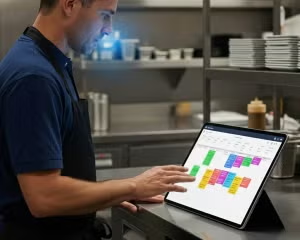Getting creative to reduce costs in your kitchen takes a little preparation. It demands a close eye on procurement best practices to assure you are purchasing and streamlining products to enable maximum cost savings.
When It Comes to Optimizing Food Items:
It’s best practice to use a single item across two or more dishes. Take the time to evaluate products and prioritize them into multiple items on the menu.
To cross-utilize effectively, first, standardize the products you purchase for use in multiple recipes, and then look to add even more applications for that item. It is smart to assure every product you purchase is used in more than one application.
Following this sequence when evaluating your menu:
- Find recipes that use similar items. For example, use one chicken item in the majority of the recipes that call for chicken, such as chicken parm, lemon chicken, stir-fry chicken, or a chicken Caesar salad.
- Identify ingredients that are only used infrequently. Get creative with your menu items and use those ingredients in new dishes. It’s still about using items in additional ways, like using the deli turkey from your lunch menu on a turkey, egg, and cheese breakfast sandwich.
- While you’re at it, place the items strategically on the menu so you can maximize the use of leftovers. For example, make sure the turkey breakfast sandwich is menued near the deli turkey sandwich so you can use it before it spoils.
Purchase the Right Products
Now that you know what type of products you need to align with your planned menu, examine your actual order list to uncover more saving opportunities. Start by looking at a high-spend category such as the center of the plate or cleaning products. Optimize purchases one category at a time after working through the highest volume items. Watch for these scenarios:
- Pack size. A larger pack size may have a lower price per ounce. Always consider whether you need the larger quantity so the product doesn’t go to waste.
- Value-added. Value-added products typically cost more, but they may be ultimately lower in overall cost when you factor in time and labor.
- On-contract. Look for products that are on your purchasing contract. Understand how rebates and incentives in your contract affect the cost of your menu.
- Alternate brand. Is there an equal but more affordable brand for an item? Be aware of brand rebates you could maximize through your contract.
- Distributor. Just as you want to slim down the variety of products you purchase, you should limit the vendors you use. This can also save money.
Before making a change, reach out to a product specialist at Gordon Food Service® to conduct a thorough evaluation. There may be a valid reason not to switch.
It’s important to be comfortable with your product choices and remain true to your brand promise. Overall, the solution starts by planning intentionally. If you can slim down costs and potentially better some of your menu offerings, it might be worth making a change.












